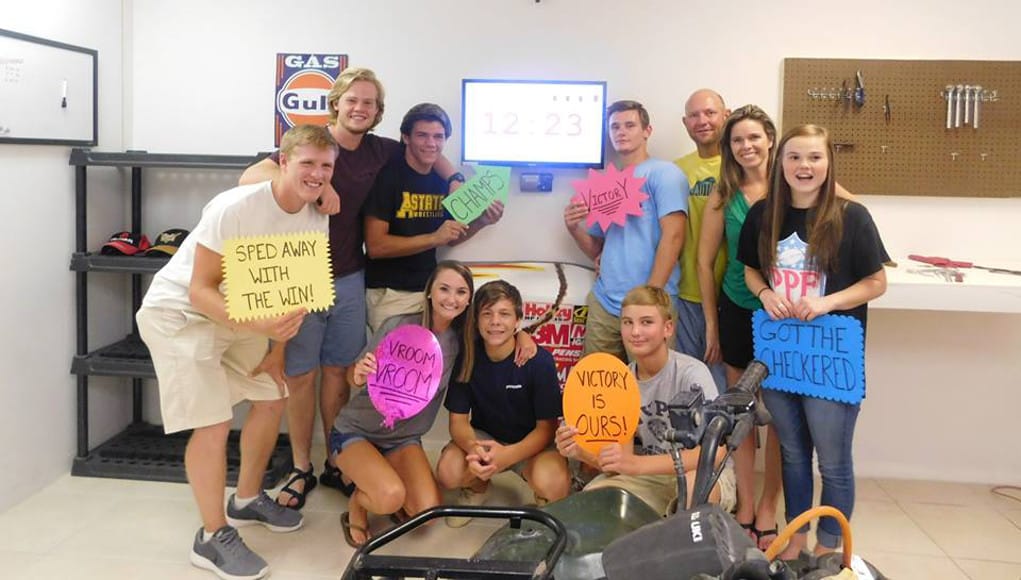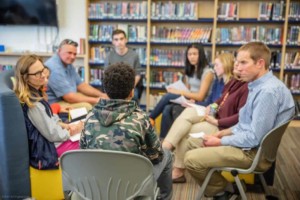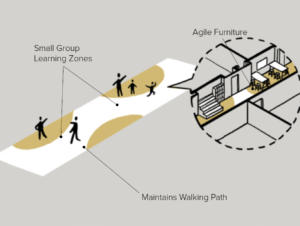How to Create a Breakout Room Activity in Your Classroom

Have you ever been to a breakout room?
If not, definitely check one out! Your group gets locked in a room, and you have to use information found inside the room to solve all kinds of puzzles and problems. The solutions lead you to more clues and if you are fast enough, you “breakout” of the room and win.
I went with a group of teenagers to a breakout room this summer, and we had so much fun working as a team to solve the puzzles that I immediately thought, “How can I transfer this into my classroom?”
Before school even started, I was researching and looking for ideas (Breakout EDU is a great resource, by the way). There is a lot out there, and I got a little overwhelmed thinking about all of the locks, clues, boxes, problems, etc., that we’d need.
Fortunately for me, my district does a fabulous job of providing professional development in the area of using technology to increase learning. For the most part, it is training for teachers written by teachers, so we get to hear about what is working in their real classroom, not just in theory.
One of the sessions I attended was about using Google Forms to create “lockbox” activities. The idea is that you put in a problem or question and the student(s) can not move on unless they get the answer correct—the correct answer can lead to more clues or one digit of the combination.
With this idea, I had my solution to a classroom breakout session—it was simple and manageable, and here is you how you can do it, too.

Getting Started
For this activity, you will need a lock, a box that the lock will fit on (you can also use an old book bag that has two zippers that meet in the middle, as long as your lock fits through them) and of course you will need some kind of reward to go inside. The last thing you will need is the problems or questions you want students to solve.
My first thought when I was choosing problems was that I wanted to use something that was not generally fun to work on, since I knew the reward would be an incentive to figure it out.
I chose addition and subtraction because I have found that it is a skill that my students need a lot of practice in. It will work best if you make it a “mission” and create meaningful and challenging multi-step problems, but you can actually transfer any practice sheet you already have to a form and make this activity in minutes.
Here are some directions I created for planning a breakout activity in Google Forms:
- Written directions (Google Docs will ask you to create a “copy” of the directions for yourself)
- Video directions
Breakout Benefits
There is so much to love about this activity. From a student perspective, It was so much fun and the engagement levels were off the charts! My classroom was excited and motivated to learn about a topic that is usually tough to engage their interest in–I have never seen students more excited about solving addition and subtraction problems. They were high-fiving and cheering out loud as they persevered through difficult problems.
This activity also teaches them grit as well as accountability—the students can not move on unless they find the correct answer. It’s up to them to work hard to find it if they want the reward. It is amazing what a little competition and a piece of candy will do. I had students who struggle with math asking to stay in at recess because they didn’t want to wait to finish their lockbox activity.
From a teaching perspective, this activity is so adaptable. It is easily differentiated for classrooms by just making a copy of the Google Form and changing the rigor of the problems to meet the needs of your students. And last but not least, it is shareable with one link. We teachers can not work any harder, so we have to work smarter. The one I used on this particular day was created and sent to me by a wonderful coworker of mine—and an entire hallway of students benefitted by her sharing.
The possibilities are endless when it comes to how you can use a Google Form to create an amazingly interactive task. I cannot more highly recommend this idea! I really think it would work for any age or subject area. I know the feedback from my students was unbelievable and they were all begging to do it again immediately after finishing the first one.
For more, see:
- Three Ways to Design Better Classrooms and Learning Spaces
- Top 5 Ways Teachers Can Incorporate EdTech into the Classroom
- Three Tips For Building a STEM Classroom Makerspace
Stay in-the-know with all things EdTech and innovations in learning by signing up to receive the weekly Smart Update.







0 Comments
Leave a Comment
Your email address will not be published. All fields are required.